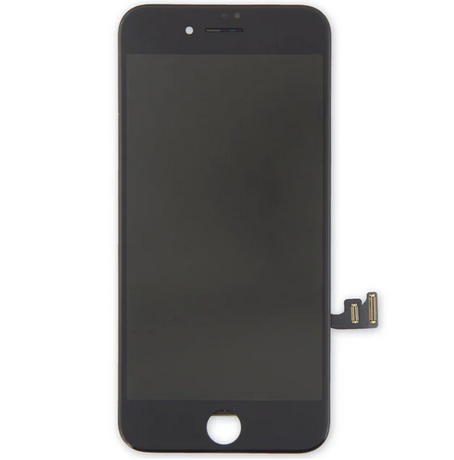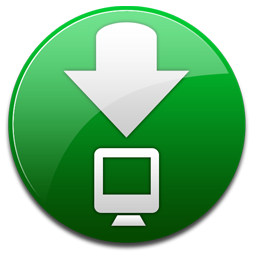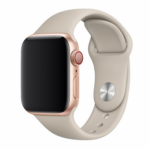Your iPhone 8 (Plus), is similar to cars in that it requires sufficient fuel to continue running. It is easy to charge the phone with either a USB cable or a Qi-certified charger. What happens if your iPhone 8 (Plus), doesn’t charge?
Evidently, things go south. It could be that the charging accessories have been damaged, aren’t Apple-certified or are defective. Maybe the charging port has been damaged or polluted. Perhaps the software has been corrupted.
Zawartość
iPhone 8 glass is shattered
Oh No! Your iPhone’s glass didn’t make it through your drop test, which you did not intend to do!

Front panel damaged and broken
Relax and test whether your iPhone is able to turn on and function normal. Most of the time the iPhone is functional, but it’s now a cosmetic blunder. However there is a problem with the iPhone 8 front glass and LCD have been bonded and have to be replaced in one piece.
Możesz purchase a brand new Display Assembly here.
iPhone is not responding or freezing.
Even after a frenzied button smashing and screen smashing the screen, the iPhone 8 doesn’t respond.
Restart iPhone
Czasami, all it takes is one restart for the iPhone to be responsive once more. For a restart of your iPhone when it’s not responding you need to hold the volume up and power button until an Apple logo is displayed (~10 minutes).
Very low battery
There is a possibility for the iPhone to stop responding in the event that the battery falls to the point of being at a very low level. Connect your iPhone into your laptop or wall charger, and allow it to charge for at minimum 20 minutes prior to using it again.
iPhone 8 will not charge
The plug-in of to your iPhone 8 does not bring it back to life.
Poor cable connection
Examine for damage and dirt on the USB cable for signs of dirt and scratches particularly near the ends. You can also try using a wall charger as it will offer more power than USB/computer.
A broken charger, or USB cord
Try different chords or chargers as well as different outlets on your wall to determine whether there’s an issue with the charger, cord or outlet.
Obstructed/bad lightning connector
Examine the Lightning connector on the side of your iPhone for dust, lint and damaged pins. Clean the connector cautiously using a toothpick or a soft toothbrush. If you find that the connector is damaged then you’ll need be able to repair it.
iPhone won’t turn on
You can’t make your loved iPhone 8 to turn on.
Drained/dead battery/bad charging port
Connect into your iPhone into your laptop or wall adapter to charge. If your phone doesn’t charge after connecting to a computer or wall adapter, it could be an uncharged battery or a poor charging port. Recharge the battery using a fully charged one, and then check whether the phone turns on.
Jeśli nie, it may an issue with the power button issue or problem with the logic board. In the event that your phone doesn’t come off, connect it into and observe whether the charging light appears. If the phone indicates that it’s charging, the lightning connector is working and the problem is the power source or logic board.
When the power button isn’t able to function, connect the phone into the wall or computer and allow it to charge. If the phone comes on and is powered it could be an issue with either using the power button, or cable that powers the power button.
Bad display
It could be that there is no indication of anything happening due to the display being not working properly. If your iPhone seems to sound like it’s functioning properly, but there is nothing apparent, it’s possible the display is damaged and needs to be replaced. The LCD and the glass panel are fused and should be replaced in a single unit.
One method to test this is to switch the handset on, and wait to the sound. You can also move the toggle for mute between the two switches to check whether it is vibrating. If it is vibrating or you hear sounds but no screen appears Then you have a problem.
Bad logic board
If all else fails the logic board likely to be defective and must be replaced. It is now time to replace it, or identify whether and which components are faulty on the board, and replace these components, employing microsoldering methods. This is a different beast!
Not optimized for iPhone” message
A message of error appears as if you’ve connected an accessory that isn’t supported by the iPhone.
Obstructed/bad lightning connector
Examine the Lightning connector on the side on the iPhone for dust, lint and pins that are damaged. Clean the connector delicately with a toothpick or soft brush.
Utilize isopropyl alcohol that is high in concentration (at at least 90 percent) and a cotton swab for cleaning any dirt that doesn’t disappear with a tooth pick or a soft toothbrush. If the connector has been damaged and you need take it off and replace.
Corroded or dirty logic board connections
When an iPhone is submerged in the liquid, there could be some debris or corrosion in the logic board connectors that result in this error.
Take the logic board off and scrub the contacts using the help of a soft cotton swab or Isopropyl alcohol with a high concentration (at minimum 90 percent).
Dirty antenna ground
If you’re iPhone was taken apart prior to disassembling it’s possible that oil residues were left on the grounding spots for the Wi-Fi and Bluetooth antennas. The oils could cause issues with the grounding of the antennas. This could result in an insufficient signal or no connectivity even.
Make sure you clean the grounding points thoroughly using an electronic cleaning solution before assembling your iPhone to avoid any issues with grounding.
There is no audio or distortion via headphones or speakers
The iPhone 8 turns on and appears to work, jednak, when you connect your headphones or speakers the sound doesn’t sound as expected.
Bad headphones/speakers
It’s highly unlikely that your speakers or headphones are defective However, it’s worth trying to determine if they are the cause of your issue in the start. Test the iPhone with various sets of headphones and speakers to ensure that the issue is on the iPhone and not an external device.
Bad audio jack
The most likely cause for audio output issues on the iPhone 8 is a bad lightning connector. If you’ve concluded that the issue doesn’t originate from your speakers from outside it is time to change the lightning connector.
Touch ID is no longer functional after replacement
After the replacement of the home button, Touch ID features stop working.
As a security measure that is embedded in your home button, its Touch ID fingerprint sensor is specifically paired with the logic board on your iPhone from the time of manufacture. If the home button’s original assembly is damaged, replaced or removed, Touch ID features will stop working.
Restore iPhone 8
Your iPhone behaves strangely or displays the message “Use iTunes to restore” when it starts.
Software corrupted
It’s not often Apple provides specific instructions on what you can do to fix the issue! When you restore an iPhone 8 will erase everything that’s on it, so be sure that everything is stored on the iPhone is saved elsewhere before making the restore. To restore the iPhone 8, connect the iPhone 8 to a computer that has iTunes installed.
Wybierać “Restore” na iPhonie 8 Summary page (click on the iPhone icon in the left menu to access the webpage). Follow the steps to restore. When you’re iPhone 8 displays the text “Please wait. Very Low Battery,” Leave it connected. It will charge the iPhone enough to recover. If your iPhone 8 hangs on this screen for prolonged periods of time, it might need to replace the battery.
Force to restore mode
When you’re iPhone 8 is frozen with an Apple logo, or is showing any other issue that blocks iTunes from being able to recognize it You can force it to enter recovery or restore mode, then utilize iTunes to restore your program.
To force to restart (hard reset) the iPhone 8, press and release the Volume Up button, then press then release the Volume Down button, and then press while holding the Power button till you can see the Apple logo, then release.
iPhone is damaged by liquid or water. damage
Following an accidental spill or fall in the sink and your iPhone is no longer functioning properly.
Damage mitigation using liquids is required
As soon as you can as you can, do the following:
- Remove immediately your iPhone from the liquid immediately (if it is safe to remove it). Reduce the amount of duration your device is in contact with liquid in order to avoid the corrosive effects.
- Turn off the iPhone off. (If the phone was turned off don’t switch it on.)
- Do not eat rice. Contrary to what you have been told, rice isn’t an the most effective and lasting solution for damaged electronics due to water.
- Start the iPhone and unplug the battery. (See the iPhone’s Guide to battery replacement to follow the correct to follow the correct. There is no need to completely take the battery off to disconnect it. Simply unplug it from your circuit board.)
- Liquid damage may complicate disassembly. Be aware that certain cables and connectors could get “adhered” to other components in unimaginable ways.
W tym przypadku, you should inspect the inside within your iPhone and identify the extent of the liquid damage.
- If the inside of your iPhone appears like it’s completely dry:
- Whew! You might have avoided the bullet. Examine the indicators for water damage examine on the port and SIM tray for the card as well as examine the battery connector with care for any signs of liquid or corrosion.
- If you see any signs of intrusion by liquid, proceed onto the section.
- If the phone is looking dry, then you don’t require any further action. Give your phone a couple of hours to cool off and then reconnect the battery, turn it on and then test the functions. If you observe any issues proceed to the next section.
- If you only see tiny amounts of liquid within the phone:
- Follow the guideline for replacing assembly on display to begin the process of removing components.
- When you take each piece off be sure to inspect it for any signs of corrosion or liquid damage. Remove any liquid or corrosion off with alcohol and a soft, clean nylon brush, like the toothbrush, and let it to dry in the air.
- Keep disassembling until you can are able to see no signs that indicate liquid infiltration.
- Once all components are dry and clean then reassemble the iPhone with a fresh battery.
- Don’t attempt to reuse batteries that have been in contact with liquids of any kind.
- Switch up your iPhone and try all functions. If you find any issues proceed through the section.
- If the internal components are almost (or completely) completely or totally covered with liquid:
- Follow the instructions for replacing the display assembly to remove your iPhone off completely.
- Clean every component, cable connectorand socket thoroughly using isopropyl alcohol as well as an uncleaned toothbrush.
- Submerge the logic card in isopropyl alcohol (or employ an ultrasonic cleaner in the event that it is there is one available). Let it soak for a long time enough to release the stuck residue and eliminate any remaining liquid or water.
- Make use of the toothbrush to remove visible corrosion and debris off your logic board. Clean the connectors, chips and fuse.
- Clean up as needed or if trace of residue remain evident.
- Once all components are dry and clean Reassemble your iPhone using the help of new battery .
- Don’t try to reuse batteries that have been exposed to any liquid.
- Turn through your iPhone and try out all the features.
- If any function fails, replace the component by the new component and test it again.
- If the issue persists an upgrade to the board may be required. We do not yet have complete guidelines for repairs at the board level So you might want to talk to a specialist in microsoldering to learn more about your options.






